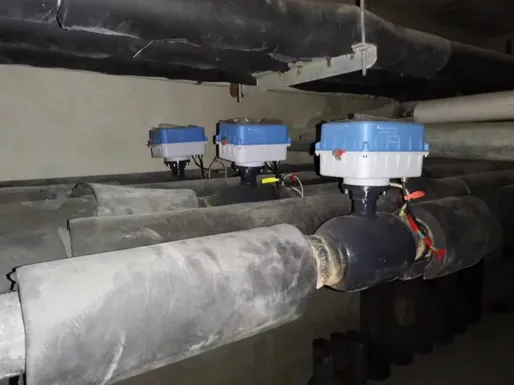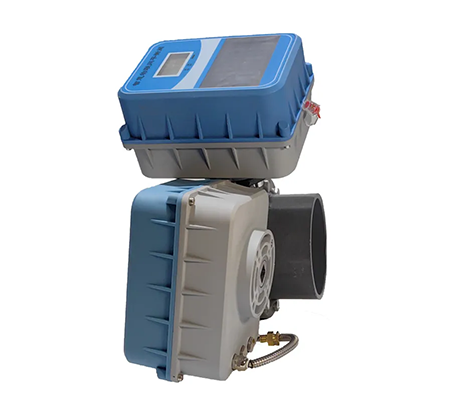Avoid your inquiry is delay response, please enter your WhatsApp/WeChat/Skype along with the message, so we can contact you at the very first time
We will reply you within 24 hours. If for urgent case, please add WhatsApp: +8613188899036, or WeChat: 0531-87968777. Or call 0531-87968777 directly.
* We respect your confidentiality and all information are protected. We will only use your information to respond to your inquiry and will never send unsolicited emails or promotional messages.
Are cold rooms, unpredictable heat, or system failures costing you money and time? These problems often come down to one thing: a faulty or outdated valve. Discover how upgrading to a motorised valve can give you complete control, reliable performance, and true comfort—while saving energy.
A motorised valve is an electrically operated valve that opens or closes a port to control the flow of hot water or heat within a system. It improves efficiency and automation in heating, hot water, and industrial control systems.
A motorised valve is a specialized valve that uses a small motor and an actuator to open or close a port within a pipe. This movement is triggered by an electrical signal from a thermostat, timer, or control system. When heat or hot water is needed, the actuator powers the motor, which shifts the valve spindle to the correct position. The microswitch inside the actuator confirms the valve’s position and sends feedback to the control panel or boiler.
Key Points:
Example:
A smart valve in a building’s heating system receives a signal to provide heat to a certain zone. The actuator powers the motor, opening the valve and allowing hot water to flow to that part of the building.

motorised valve actuator in action
Motorised valves play a crucial role in ensuring heat and hot water are delivered only where and when needed. This precision helps building automation engineers, plant managers, and maintenance teams:
According to industry studies, buildings with automated motorised valves can reduce heating energy costs by up to 25% over manual systems. The difference is even greater in complex multi-zone setups, where efficient zone valve use is key.
“Switching to modern motorised valves was a game-changer for our industrial facility. We cut maintenance hours and slashed energy bills.”
— Facility Maintenance Supervisor
A zone valve is a type of motorised valve designed to control the flow of hot water or heat to specific zones within a building. Each valve is connected to its own thermostat or control, so you can heat different areas independently.
Typical Applications:
| Zone Valve Use Case | Example System |
|---|---|
| Living Room Heating | 2 port motorised |
| Domestic Hot Water | 2 port motorised |
| Multi-floor Building Heat | Multiple zone valves |
Benefit:
Using zone valves lets you avoid overheating unused spaces, improving comfort and reducing costs.
The motor and actuator are the heart of every motorised valve. Here’s how they work together:
Chart: Motorised Valve Automation Cycle
| Step | Component | Function |
|---|---|---|
| 1 | Actuator | Receives signal |
| 2 | Motor | Drives spindle/lever movement |
| 3 | Valve Spindle | Opens/closes port |
| 4 | Microswitch | Confirms valve position |
This mechanism lets you control heating and hot water with high accuracy and minimal manual work.

How Does the Motor and Actuator Enable Valve Automation
2 port motorised valves are the standard for many heating and hot water systems. They simply allow or block flow through a single pipe. By contrast, 3 port valves can direct flow to one of two paths—often used in “Y” plan or S plan heating systems.
| Valve Type | Use Case | Example Brand |
|---|---|---|
| 2 Port Motorised Valve | Simple zone isolation | Honeywell |
| 3 Port Valve | Dual function (heat + hot water) | Drayton |
2 port motorised valves are popular due to their reliability, ease of installation, and suitability for zone valve setups. For most commercial HVAC and industrial uses, 2 port is the go-to choice.
Every motorised valve comes with design features to ensure safe, flexible operation:
Table: Valve Features and Benefits
| Feature | Benefit |
|---|---|
| Manual Lever | Bypass automation, quick test |
| Microswitch | Ensures correct operation |
| Position Marker | Immediate visual feedback |
For best practice, choose valves with all these features—especially in complex automation projects.
Even high-quality valves can fail, especially if maintenance is neglected or installation isn’t ideal. Here are common issues:
Tip: Regular testing and scheduled maintenance will prevent most issues and extend your valve’s working life.
If your heating or hot water is not working, follow these steps:
When specifying a motorised valve for your system, consider:
Need more guidance? See our guide to smart valve selection for industrial and commercial buildings.
Today’s smart valves go far beyond simple open/close operation. They offer:
Discover the future of digital valve control with solutions like our MBUS smart valve and Wi-Fi smart valve for seamless automation.
How do I know if my motorised valve is faulty?
Can I manually open a motorised valve?
What is the difference between a 2 port and 3 port motorised valve?
How important is the microswitch?
Which brands are most reliable for motorised valves?
Explore more about advanced electric actuator solutions and our flow regulating valve lineup to see how you can optimize your HVAC or industrial systems.